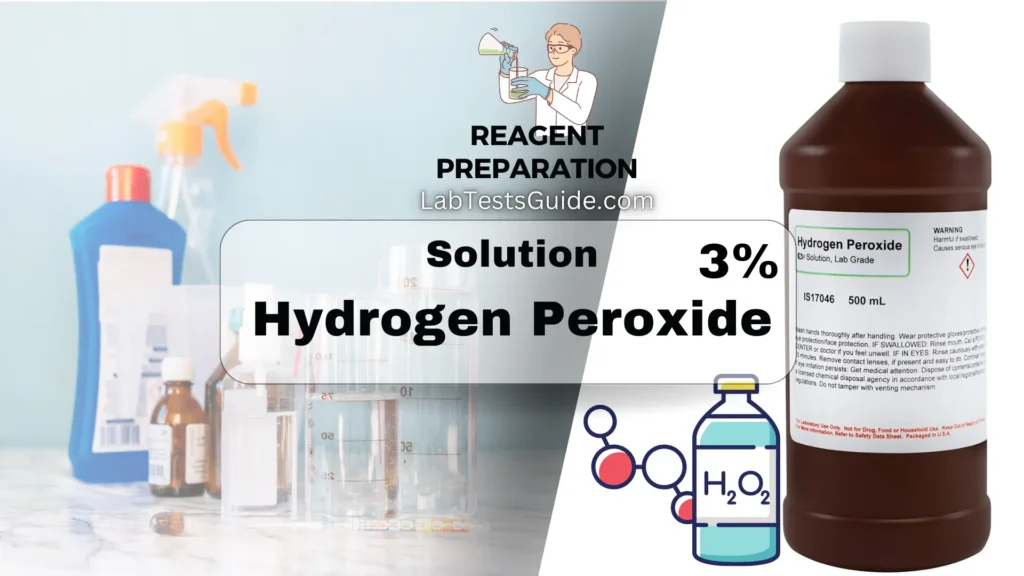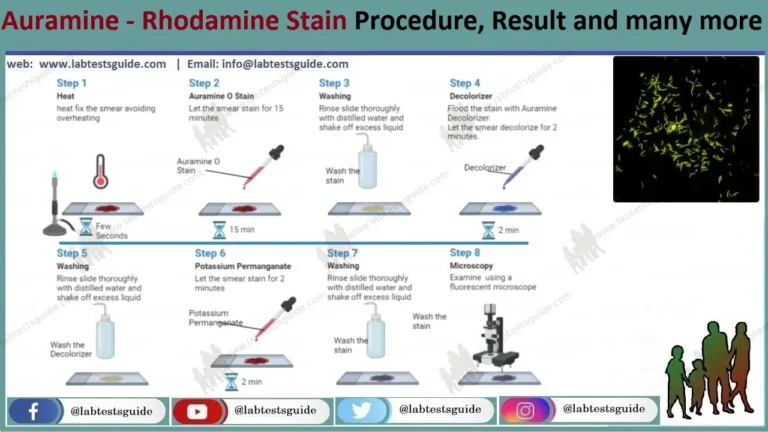Hydrogen peroxide (H₂O₂) is a versatile lab reagent used for oxidation reactions, bleaching, and disinfection. It decomposes into water and oxygen, requiring careful handling and storage in dark, cool conditions.

Hydrogen peroxide (H₂O₂) is a powerful oxidizing agent widely used in laboratories for oxidation reactions, tissue bleaching, and cleaning. It decomposes into water and oxygen, which makes it a useful reagent in various experiments. Due to its reactive nature, it requires careful handling and storage in cool, dark conditions to maintain stability and effectiveness.
Uses of Hydrogen Peroxide:
- Disinfection: Antiseptic for minor cuts and wounds; helps prevent infection.
- Oral Hygiene: Used in mouth rinses and tooth-whitening products.
- Oxidizing Agent: Employed in chemical reactions and synthesis in laboratories.
- Bleaching Agent: Used for bleaching textiles, paper, and hair.
- Cleaning Agent: Cleans and disinfects surfaces and lab equipment.
- Water Treatment: Purifies and disinfects drinking water.
- Deodorizing: Removes odors by breaking down organic compounds.
Composition of Hydrogen Peroxide:
Hydrogen peroxide (3%) 10 vols solution
| Component | Quantity | Notes |
|---|---|---|
| Hydrogen Peroxide (30% v/v) | 1 ml | Obtain from suppliers like Merck/BDH; contains 100 volumes. |
| Distilled Water | 9 ml | To dilute the hydrogen peroxide to the desired concentration. |
Preparation Instructions:
- Measure 1 ml of 30% hydrogen peroxide solution.
- Add 9 ml of distilled water.
- Mix thoroughly and use immediately for best results.
Preparation of Hydrogen Peroxide:
Hydrogen peroxide (3%) 10 vols solution.
- Measure Water: Measure 9 ml of distilled water and transfer it to a chemically clean bottle with a 10–15 ml capacity.
- Add Hydrogen Peroxide: Add 1 ml of 30% hydrogen peroxide solution to the bottle.
- Mix: Cap the bottle and mix thoroughly.
Caution: Hydrogen peroxide is corrosive and oxidizing. Handle it with care. Store in a cool, dark place at 2–8 °C to prevent decomposition. Use the prepared solution on the same day.
Precautions:
- Protective Gear: Wear gloves, safety goggles, and a lab coat to protect skin and eyes from splashes and spills.
- Ventilation: Use in a well-ventilated area to avoid inhaling vapors.
- Storage: Store in a cool, dark place at 2–8 °C. Avoid exposure to light and heat to prevent decomposition and potential buildup of oxygen pressure.
- Handling: Handle with care as it is a strong oxidizer and can cause burns or irritation. Do not mix with organic materials or reducing agents.
- Spills: In case of spills, clean up immediately using appropriate neutralizing agents and dispose of according to safety guidelines.
- Decomposition: Be aware that hydrogen peroxide decomposes over time, releasing oxygen. Use freshly prepared solutions to ensure effectiveness.
Uses of Hydrogen Peroxide in Clinical Laboratories:
- Disinfection: Used to disinfect surfaces and equipment to prevent contamination.
- Cleaning: Cleans laboratory glassware and tools by breaking down organic residues.
- Oxidizing Reagent: Employed in various chemical assays and reactions requiring oxidation.
- Bleaching: Used for tissue bleaching in histological preparations.
- Decontamination: Assists in the decontamination of biological samples and spills.
Hydrogen Peroxide Reagent Principle, Composition, Preparation, Method, Precaution and Uses
Possible References Used





